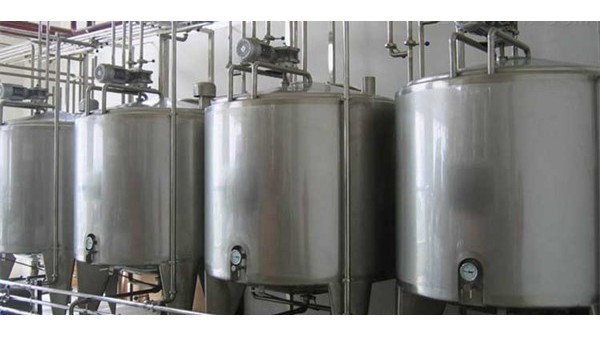Fermentation technology is widely used in pharmaceutical, food, chemical and other fields. During the fermentation process, the substances in the fermentation tank produce gas through the metabolism of microorganisms.
These gases will form foam. Excessive foam will affect the fermentation efficiency and may even lead to production failure.
Therefore, fermenter designs often include defoaming vessels to keep the fermentation process running smoothly.
This article will discuss the characteristics of the defoaming container of the fermentation tank, and illustrate the application of radar level meter in measuring the level of the defoaming container through a practical case.

The characteristics of the fermentation tank defoaming container are mainly reflected in its structural design and function.
First of all, the defoaming container is usually located on the top of the fermentation tank and is connected to the fermentation tank body to collect and process the foam generated.
It usually has a larger volume to ensure efficient collection of foam during peak fermentation. Secondly, the defoaming container is usually equipped with a special defoaming device, such as a mechanical stirrer or chemical spray system, to destroy the foam structure and reduce the foam volume.
In addition, in order to monitor the level in the defoaming container, a level meter is usually installed to control the defoaming effect and the fermentation process in real time.

In actual industrial applications, radar level meters are widely used in level measurement of defoaming containers in fermenters due to their high accuracy and non-contact measurement.
The following is a practical example illustrating the effectiveness of a radar level meter in measuring the level of a defoaming container. A pharmaceutical company uses a fermentation method to produce antibiotics. The fermentation process produces a large amount of foam.
In order to ensure production efficiency and product quality, the company decided to install a radar level meter in the defoaming container of the fermentation tank.
When selecting a radar level meter, considering the high temperature, high humidity and corrosive environment inside the defoaming container, a high temperature and corrosion resistant radar level meter was selected.
After installation, the antenna part of the radar level meter points directly to the inside of the defoaming container, and the emitted microwaves can penetrate the steam and foam in the container and be reflected back by the liquid surface.
The microprocessor inside the level meter analyzes the signal strength and time delay of the reflected wave to accurately calculate the level height in the defoaming container.
By continuously monitoring the material level, operators can understand the defoaming effect in time and adjust the defoaming strategy to ensure the stability of the fermentation process.

In actual operation, radar level meters have shown extremely high reliability and accuracy. The level meter can provide accurate measurement results even in the presence of abundant foam and large level fluctuations. In addition, due to the non-contact measurement principle of the radar level meter, interference to the inside of the defoaming container is reduced and the service life of the equipment is extended.
Through this case, we can see the advantages of radar level meters in measuring the level of defoaming containers in fermenters. It not only provides accurate level information to help operators optimize the defoaming process, but also improves the control level and production efficiency of the fermentation process.
